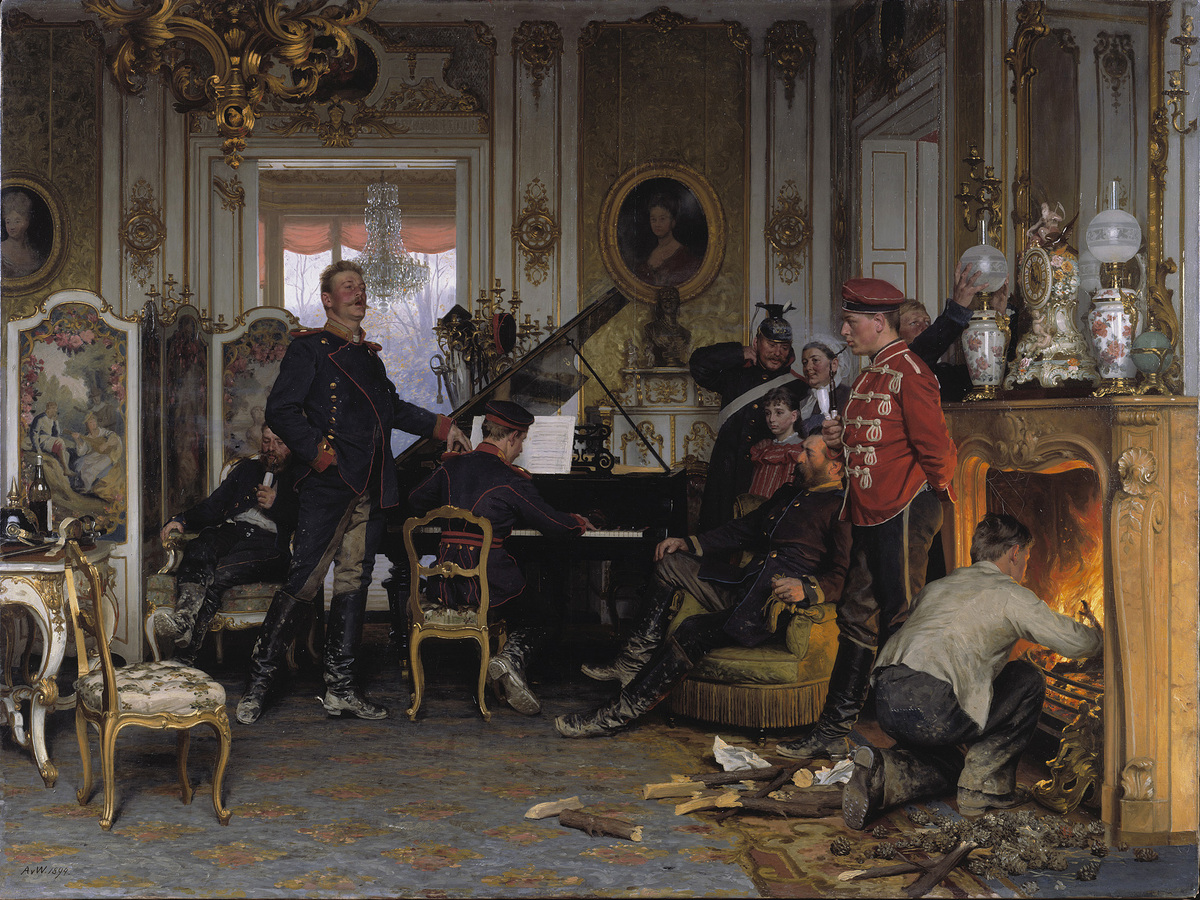Abstract
This painting by Anton von Werner (1843–1915) was completed in 1894
and purchased the same year by the National Gallery in Berlin (making it
the first Werner acquired by the gallery). The sketch upon which the
painting was based, however, had been executed twenty-four years
earlier: on October 24, 1870, when the artist accompanied Chief of the
Prussian General Staff Helmuth von Moltke (1800–1891) and his entourage
in occupied France. The final work shows German troops occupying the
Château de Brunoy outside Paris during the Franco-Prussian War. To be
sure, Werner documents every detail of the scene and the setting—right
down to the inexpertly repaired boot sole at the right. But his
principal aim is to emphasize the contrast between the vigorous,
ruddy-cheeked troops, with their practical mud-covered footwear, and the
sumptuous, effeminate interior they have requisitioned for temporary
lodgings. This contrast is conveyed not least by Werner’s palette—the
soldiers, dressed in blue uniforms with red piping, are rendered in dark
primary colors, thereby standing out against an interior awash in
pastels and dominated by the warm yellow of gilded surfaces. In this and
other pictorial choices, Werner seems to suggest German cultural
superiority over the French. For example, the soldiers have not, as in
the age-old manner, destroyed the furniture at hand to light a fire and
revenge themselves on the enemy; instead, they have taken the time to
gather wood on the villa’s grounds, seen just outside the window at
rear. And while the soldiers look dirty and rumpled, they are not
necessarily rough-hewn. In fact, they have enough good German
Bildung—education and
“cultivation”—to play the piano and give voice to song in an impromptu
concert. (According to Werner’s notes, they were singing Franz
Schubert's setting of Heine's poem “Das Meer erglänzte weit hinaus”
[“The Sea Shone Resplendent far into the Distance”], which, as he added,
was very popular with all the military bands at that time). This history
lesson would not have been lost on German viewers of the painting in
1894. Nevertheless, it would be wrong to portray Werner’s politics as
illiberal or chauvinist. He had no need to make the enemy appear
despicable: except for the villa’s female concierge and her daughter,
who appear to be suffering none of the hardships inflicted upon the
Parisian population at the time, the French have simply disappeared from
the scene. The mood of good humor is further reinforced by the elaborate
clock and vases on the mantle—their very presence suggesting that no
looting has been committed by the occupying troops. These choices make
the painting even more melodramatic and contrived, undercutting its
apparently disinterested virtuosity. What conclusions do we draw from
this? On the one hand, the very fact that patriotic painting of this
sort had achieved such popularity by the 1890s may indicate that, by the
turn-of-the-century, the chauvinism so vehemently criticized by
Friedrich Nietzsche after 1871 had evolved into something that was, if
not more generous to French victimhood or forgiving of German brutality,
then at least more innocuous. Tellingly, when contemporary viewers
commented upon Werner’s portrayal of soldiers lounging disrespectfully
on the furniture of a beautiful French château, they found this aspect
amusing, not offensive. On the other hand, such public reaction may
reflect the philistine complacency that Nietzsche also identified as
characteristic of post-unification German society.
